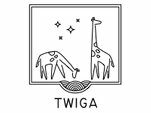Within the TWIGA project a broad variety of partners from Europa and Africa are involved. The TWIGA team has applied the award winning HydroNET partnership model where the strength of each partner in the information chain can be optimally used. This blog, written by one of the TWIGA partners HydroLogic Research, outlines the opportunities and power of this partnership model for the implementation of new services, for partners and for end-users of TWIGA.
Generic partnership model
In total, 18 TWIGA partners from the golden triangle (knowledge institutes, government, businesses) are working on providing decision support services for the agriculture, insurance, energy, water and disaster management sectors in sub-Saharan Africa. For these TWIGA services, remote-sensing and ground truth data are smartly integrated and translated into advisories for end users. Each TWIGA service started with a user requirement analysis. Based on this user input, partner chains were formed to provide:
- the required remote sensing, ground truth and other relevant data (data providers)
- the right knowledge to translate these data into added value advisories (knowledge provider)
- the generic platform to automatically connect data with models to produce these advisories in real time and to arrange access control to these advisories via an advanced Application Programming Interface (platform provider).
- the application/user interface which gives the end user easy access to the resulting advisories (frontend provider)
- client network, sales, business development and marketing expertise to sell the service to client and to fulfill the role as first line helpdesk (reseller).
Scalable revenue share model
For each TWIGA service a partner chain with one or more data owners, added value providers, the platform owner, a frontend provider and reseller has been established. The revenue from the service (paid by the end user) will be distributed fairly amongst all these partners according to clear agreements. An advantage is that this partnership model is very scalable. New data, models or partners can be easily added to expand services to new clients or regions. It also benefits the partners in the chain, for example a data provider can put all their effort in providing the best data, without having to worry on how these data or derived products can ultimately reach the end-user. Another advantage of this partnership model is that it works both for low-cost services for small scale farmers as well as for advanced and complicated services for multinationals (Figure 1). This scalability is one of the key factors in for a successful TWIGA project.

Figure 1. The TWIGA service revenue share model makes sure that all revenue will be distributed fairly among all partners involved.
Written by : Glenn Morvan
Hydrologic

